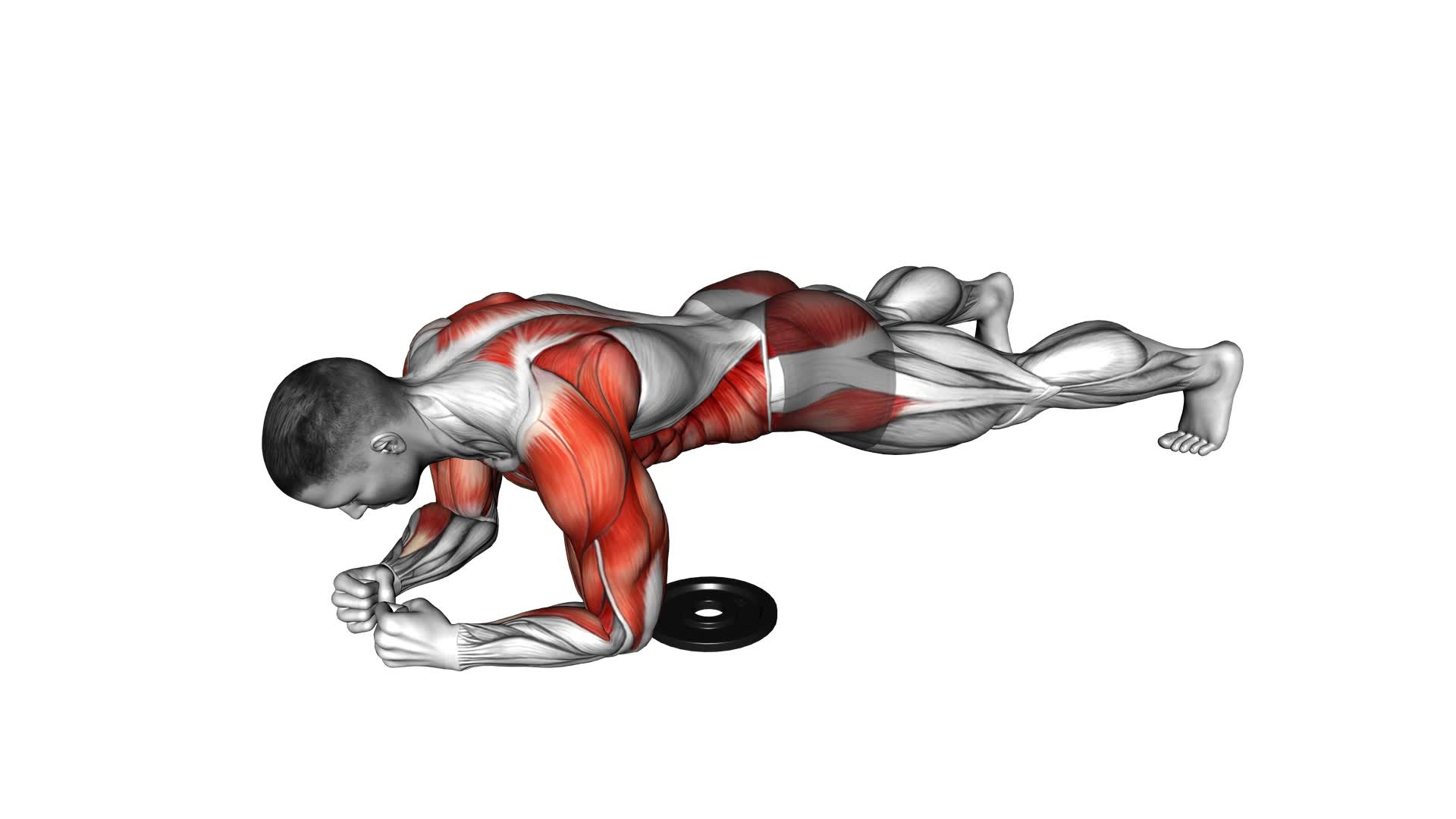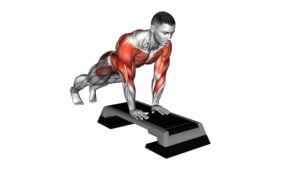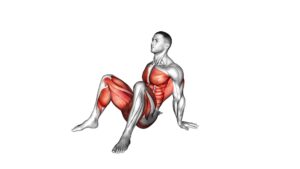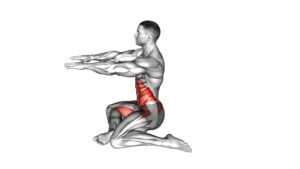Plank Prone Plate Switch (male) – Video Exercise Guide & Tips

Are you looking for a challenging and effective exercise to strengthen your core? Look no further than the Plank Prone Plate Switch.
Watch This Exercise Video
This exercise targets your abs, back, and shoulders, and can be done with just a weight plate.
In this video exercise guide, we'll show you the proper form and technique, provide step-by-step instructions, and offer variations and modifications to suit your fitness level.
Get ready to feel the burn and achieve amazing results with this intense plank variation.
Key Takeaways
- The Plank Prone Plate Switch strengthens core muscles and targets multiple muscle groups simultaneously.
- Proper form and technique are important for this exercise, including aligning the body in a straight line and activating shoulder and back muscles.
- Body alignment tips include positioning hands under shoulders, engaging core and keeping back straight, and avoiding lifting hips too high or dropping them too low.
- Muscle engagement cues involve activating the core, squeezing glutes, maintaining a neutral spine, and controlling breathing.
Benefits of the Plank Prone Plate Switch
One of the benefits of the Plank Prone Plate Switch is that it strengthens your core muscles. The core muscles are essential for maintaining stability and proper posture. By performing this exercise, you engage your abdominal muscles, obliques, and lower back muscles, helping to improve your overall core strength. This can lead to better balance and stability in your daily activities and reduce the risk of injuries.
Another benefit of the Plank Prone Plate Switch is that it targets multiple muscle groups simultaneously. Not only does it work your core muscles, but it also engages your shoulders, chest, and arms. This exercise helps to build upper body strength and improve overall muscular endurance.
Moreover, the Plank Prone Plate Switch offers variations that can challenge and progress your fitness level. You can increase the difficulty by using heavier plates or adding a stability challenge by performing the exercise on an unstable surface, such as a Bosu ball. These variations allow you to continually challenge your muscles and prevent plateauing in your workouts.
Proper Form and Technique
To perform the Plank Prone Plate Switch with proper form and technique, there are a few key points to keep in mind.
First, ensure that your body is aligned in a straight line from head to toe, engaging your core muscles to maintain stability.
Second, focus on activating your shoulder and back muscles to properly execute the plate switch motion.
Lastly, be aware of common form mistakes such as sagging hips or lifting your head too high, and make adjustments as needed to maintain proper form throughout the exercise.
Body Alignment Tips
Ensure proper alignment of your body by maintaining a strong and stable position throughout the Plank Prone Plate Switch exercise. Proper alignment is essential for maximizing the benefits of this exercise and preventing injuries.
Start by positioning your hands directly under your shoulders, making sure your wrists are aligned with your elbows. Keep your core engaged and your back straight, avoiding any sagging or arching.
Engage your glutes and thighs to maintain a stable position. Avoid lifting your hips too high or dropping them too low, as this can compromise your form and reduce the effectiveness of the exercise.
Muscle Engagement Cues
Engage your core and stabilize your body for optimal muscle activation during the Plank Prone Plate Switch exercise. To ensure you're using the correct muscle activation techniques and breathing techniques, follow these cues:
- Activate your core: Draw your belly button towards your spine and engage your abdominal muscles. This will help stabilize your body and protect your lower back.
- Squeeze your glutes: Contract your glute muscles to help maintain a stable and aligned position throughout the exercise.
- Maintain a neutral spine: Avoid arching or rounding your lower back by keeping your spine in a neutral position. Imagine a straight line from your head to your heels.
- Control your breathing: Take deep breaths in through your nose and exhale fully through your mouth. This will help you maintain focus and control while performing the exercise.
Common Form Mistakes
When performing the Plank Prone Plate Switch exercise, it's important to be aware of common form mistakes in order to maintain proper form and technique.
One common mistake is letting your hips sag towards the floor, which can put unnecessary strain on your lower back. To avoid this, engage your core muscles and keep your body in a straight line from your head to your heels.
Another mistake is lifting your hips too high, which reduces the effectiveness of the exercise. To fix this, focus on keeping your hips in line with your shoulders and heels.
For beginners, modifications can be made by starting with a modified plank on your knees or by using a stability ball instead of a weight plate.
Now that you know about common form mistakes, let's move on to the equipment needed for the exercise.
Equipment Needed for the Exercise
To perform the Plank Prone Plate Switch exercise, you'll need a weight plate. Here are some discussion ideas regarding the equipment needed for this exercise:
- Recommended weight for the plate in the plank prone plate switch exercise:
- The weight of the plate will depend on your fitness level and strength. It's recommended to start with a lighter weight, such as 5 or 10 pounds, and gradually increase as you progress.
- It's important to choose a weight that challenges you, but still allows you to maintain proper form throughout the exercise.
- Alternatives to using a plate for the exercise:
- If you don't have access to a weight plate, you can use other objects with some weight, such as dumbbells, kettlebells, or even water bottles filled with sand or water.
- Another alternative is to use resistance bands or exercise sliders to add resistance and intensity to the exercise.
Step-by-Step Instructions
Let's dive into the step-by-step instructions for the Plank Prone Plate Switch exercise.
To perform this exercise with proper form, it's important to keep a strong core, avoid sagging hips, and maintain a steady pace.
We'll also go over common mistakes to avoid and modifications for beginners to help you get the most out of this exercise.
Proper Form Tips
To properly execute the Plank Prone Plate Switch exercise, start by positioning yourself in a high plank position.
Here are some proper form tips to ensure you get the most out of this exercise:
- Maintain a neutral spine: Keep your back straight and avoid sagging or arching.
- Engage your core: Tighten your abdominal muscles to stabilize your body.
- Proper breathing techniques: Breathe in through your nose and exhale through your mouth to maintain a steady rhythm.
- Progressions and regressions: If you find this exercise too challenging, you can modify it by performing it on your knees or using a lighter weight plate.
By following these tips, you'll be able to perform the Plank Prone Plate Switch exercise effectively and safely.
Now, let's move on to the next section and discuss common mistakes to avoid.
Common Mistakes to Avoid
To avoid common mistakes while performing the Plank Prone Plate Switch exercise, it's important that you focus on maintaining proper form and technique. This will help you avoid injury and get the most out of the exercise.
One common mistake to avoid is letting your hips sag or rise too high during the movement. Keep your body in a straight line from your head to your heels.
Another mistake isn't engaging your core muscles properly. Make sure to tighten your abs and glutes throughout the exercise to maintain stability.
Lastly, don't forget about proper breathing techniques. Breathe in deeply through your nose, and exhale fully through your mouth. This will help you stay focused and maintain control throughout the exercise.
Modifications for Beginners
Maintaining proper form and technique is crucial for beginners when performing the Plank Prone Plate Switch exercise to ensure maximum benefit and minimize the risk of injury. Here are some modifications and progression options specifically designed for beginners:
- Start with an elevated surface: If the full plank position is too challenging, begin by placing your hands on an elevated surface, such as a bench or step. This will reduce the amount of bodyweight you have to support and make the exercise more manageable.
- Shorten the duration: Instead of holding the plank for the recommended time, start with shorter intervals, such as 10-15 seconds. As you build strength and endurance, gradually increase the duration.
- Slow and controlled movements: Focus on maintaining a slow and controlled pace when switching the plate from one hand to the other. This will help you to engage your core muscles effectively and prevent any jerky movements.
- Use lighter weights: If you find it challenging to switch the plate while maintaining proper form, start with lighter weights or even no weight at all. As you become more comfortable with the exercise, you can gradually increase the weight to challenge yourself further.
Variations and Modifications
Switch up your plank exercise with variations and modifications. By incorporating different variations into your routine, you can target different muscle groups and challenge your body in new ways. One variation you can try is the side plank, where you balance on one forearm and the side of your foot, engaging your obliques and core muscles.
Another variation is the plank with leg lifts, where you lift one leg off the ground while maintaining a strong plank position, engaging your glutes and hamstrings.
To progress your plank exercise, you can try adding instability by using a stability ball or a BOSU ball. By placing your forearms or hands on the ball, you'll have to engage your core muscles even more to maintain balance.
You can also try adding movement to your plank, such as plank jacks or plank rotations, to further challenge your muscles and increase your heart rate.
Switching up your plank exercise with variations and progressions won't only prevent boredom but also help you maximize your results. By constantly challenging your body with new movements and positions, you'll continue to build strength and improve your stability.
Now, let's move on to some tips for maximizing your results with the plank exercise.
Tips for Maximizing Results
To achieve optimal results with your plank exercise, it's important to implement these tips for maximizing your efforts:
- Maintain proper form: Ensure that your body is in a straight line from head to toe, with your core engaged and your glutes squeezed. Avoid sagging or arching your back, as this can reduce the effectiveness of the exercise.
- Increase the duration: Gradually increase the amount of time you hold the plank position. Start with 30 seconds and work your way up to a minute or more. This will help build endurance and strengthen your core muscles.
- Add variations: To challenge your body even more, try incorporating different plank variations, such as side planks, plank jacks, or plank with leg lifts. These variations target different muscle groups and keep your workout interesting.
- Stay consistent: Consistency is key when it comes to maximizing results. Aim to perform the plank exercise at least three times a week, gradually increasing the intensity and duration over time. This will help you see progress and achieve your fitness goals.
Frequently Asked Questions
How Many Calories Does the Plank Prone Plate Switch Burn?
Incorporating the plank prone plate switch into your workout routine has several benefits.
Not only does it help strengthen your core muscles, but it also engages your shoulders, chest, and arms.
To properly execute this exercise for maximum effectiveness, start in a plank position with your hands on the ground and a weight plate in one hand.
Then, switch the plate to the other hand while maintaining a stable and tight core.
This exercise can help burn calories and improve overall strength.
Can the Plank Prone Plate Switch Help in Improving Posture?
The plank prone plate switch is an effective exercise for improving posture. By engaging your core muscles, it helps to strengthen the muscles that support your spine and promote better alignment.
To get the most benefits, it's important to maintain proper form and technique. Start in a plank position with your hands on the plates, then alternate lifting one hand at a time while keeping your body stable.
This exercise can be a great addition to your workout routine for overall core strength and posture improvement.
How Often Should I Perform the Plank Prone Plate Switch Exercise?
To get the most out of the plank prone plate switch exercise, it's important to know how often to do it.
The plank prone plate switch benefits your core strength and stability, while also working your shoulders and upper body.
To see results, aim to perform this exercise 2-3 times per week.
Are There Any Precautions or Contraindications for Performing the Plank Prone Plate Switch?
Before attempting the plank prone plate switch, it's important to be aware of any precautions or contraindications. While this exercise can provide numerous benefits, such as strengthening your core and improving stability, it may not be suitable for everyone.
If you have any existing injuries or conditions that could be aggravated by this exercise, it's best to consult with a healthcare professional before attempting it. Your safety should always be a top priority.
What Muscles Does the Plank Prone Plate Switch Primarily Target?
The plank prone plate switch primarily targets your core muscles, specifically the rectus abdominis, transversus abdominis, and obliques. This exercise is a variation of the plank that focuses on strengthening your core.
It engages multiple muscle groups in your abdomen and lower back, helping to improve stability and posture.
Incorporating plank variations like the prone plate switch into your workout routine can be an effective way to challenge and strengthen your core.
Conclusion
In conclusion, the Plank Prone Plate Switch is a highly effective exercise for strengthening the core and improving stability. By following proper form and technique, using the necessary equipment, and following step-by-step instructions, you can perform this exercise safely and efficiently.
Additionally, variations and modifications can be made to suit different fitness levels. Remember to maximize your results by incorporating these tips into your routine. Keep challenging yourself and enjoy the benefits of a stronger core.

Author
Years ago, the spark of my life’s passion ignited in my mind the moment I stepped into the local gym for the first time. The inaugural bead of perspiration, the initial endeavor, the very first surge of endorphins, and a sense of pride that washed over me post-workout marked the beginning of my deep-seated interest in strength sports, fitness, and sports nutrition. This very curiosity blossomed rapidly into a profound fascination, propelling me to earn a Master’s degree in Physical Education from the Academy of Physical Education in Krakow, followed by a Sports Manager diploma from the Jagiellonian University. My journey of growth led me to gain more specialized qualifications, such as being a certified personal trainer with a focus on sports dietetics, a lifeguard, and an instructor for wellness and corrective gymnastics. Theoretical knowledge paired seamlessly with practical experience, reinforcing my belief that the transformation of individuals under my guidance was also a reflection of my personal growth. This belief holds true even today. Each day, I strive to push the boundaries and explore new realms. These realms gently elevate me to greater heights. The unique combination of passion for my field and the continuous quest for growth fuels my drive to break new ground.







